Army’s ‘Big Six’ Ride Into The Valley Of Death
Posted on
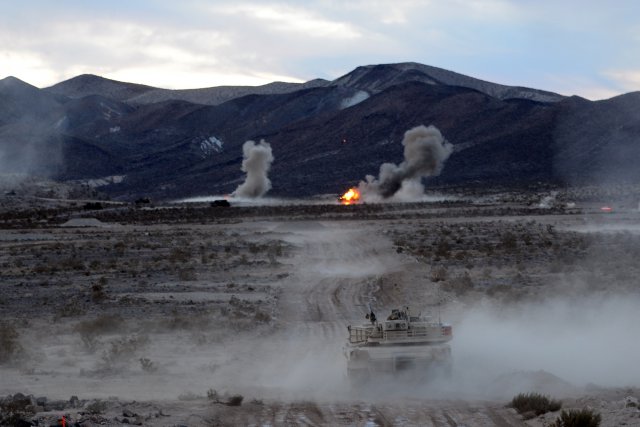
M1 tank at the National Training Center in 2015.
The good news about the Army’s Big Six modernization priorities is they’re not bogged down in the usual bureaucracy. The bad news is they’ve not taken root in the bureaucracy yet, either. That will be the huge challenge awaiting the Army Futures Command being stood up this summer.
In the last two weeks, the hand-picked heads of the Cross Functional Teams working on the Big Six have announced a lot of exciting experiments, demonstrations, and prototyping efforts, from combat robots to anti-aircraft weapons to augmented reality goggles. Experiments, demos, and prototypes are essential groundwork to modernize a military, but they aren’t enough to make modernization happen. (Witness the British Army’s abortive Experimental Mechanized Force of the 1920s). It takes a procurement program to buy new equipment in bulk. That requires funding, contracting, writing of tech manuals, issuing to units — all the legwork you actually need bureaucracies to do.
It’s so common for promising technologies to fail to make this transition — for cool ideas from the lab to never reach the field — that the Pentagon has its own darkly humorous name for the phenomenon: the “valley of death.”
The Army’s modernization initiatives aren’t plunging into the valley of death this week or even, in most cases, this year. It will take time to build prototypes, to test them, and to figure out how the force will make the most of new technology. But over the next few years, enough of these projects have to make it cross that daunting gap to actually change the Army.
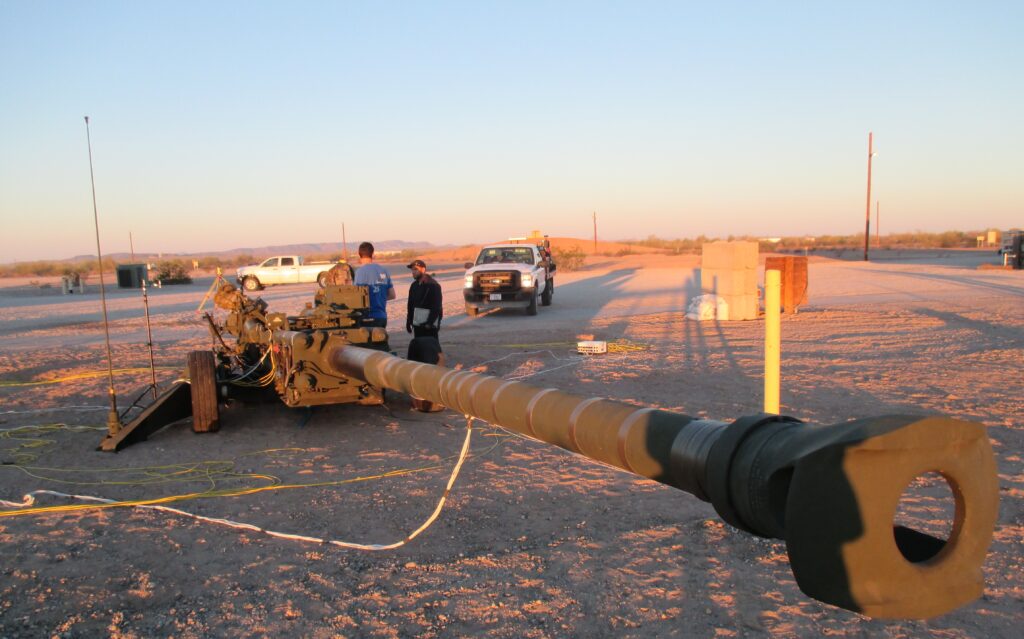
An Army M777 howitzer modified with an extra-long barrel for an Extended Range Cannon Artillery (ERCA) test.
A Foot in Both Worlds
In some limited but real ways, the Cross Functional Teams already reach across the gap between technology and procurement. In fact, their name refers to how each CFT pulls in representatives from different functions and communities of expertise across the Army: combat veterans, futurists, writers of doctrine and requirements, scientists and technologist, and, yes, acquisition professionals. The idea is to bring all the players together in one room to get on the same page and make tradeoffs on the spot, rather than memos endlessly crisscrossing the country.
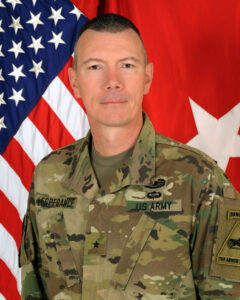
Brig. Gen. David Lesperance
But having acquisition officials on board doesn’t make the teams into acquisition organizations. The leaders of the CFTs have made that very clear in the last two weeks in conversations with the media and presentations to the AUSA Global Force conference.
Some acronyms are unavoidable in explaining the players here. The Army’s acquisition programs are run by Program Executive Officers (PEOs) and their subordinate Project Managers (PMs), which report — by law — to the civilian Assistant Secretary for Acquisition, Logistics, and Technology or ASA(ALT), the designated Service Acquisition Executive (SAE). They are and will remain responsible for everything that happens after a formal decision to start a program to develop and purchase a new physical thing, a Materiel Development Decision or MDD.
“We are very clearly staying left of an MDD, in the experimentation (phase),” Brig. Gen. David Lesperance, the head of the armored vehicle CFT, says. He spoke to the AUSA conference. “I acknowledge and understand the role of the PEO as well as the PMs,” he said. “We are not stepping on each others’ toes.”
Lesperance has proposed an ambitious schedule for both manned Next Generation Combat Vehicles and Robotic Combat Vehicles — but that plan very deliberately stops after three rounds of “experimental prototypes.” Everything in it, he said, is funded with so-called 6.4 money, which is defined as “demonstration and validation” prior to full-scale engineering & manufacturing development (EMD) of a producible weapons system.
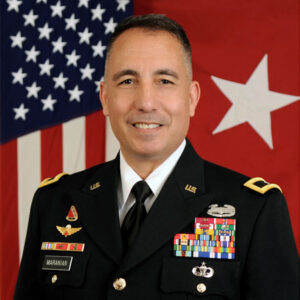
Brig. Gen. Stephen Maranian
“The CFTs’ charter… is to operate between concept and materiel decision, MDD,” the head of the artillery team, Brig. Gen. Steve Maranian, told me in an interview before AUSA. “We’re really operating with the science and technology realm” — S&T being a Pentagon term of art for research that’s separate form and preliminary to developing a specific weapon system for production and fielding.
So when Maranian outlined a whole series of initiatives the Army’s taking in what it’s calling Long-Range Precision Fires, he also made clear that the CFT wasn’t in charge of all of them. Consider the Precision Strike Missile (formerly LRPF) that will be the longest range weapon in the artillery. “What the CFT is working on is not that initial portion — that’s a PM project… It’s right of MDD, it’s part a program of record,” Maranian took pains to explain. What the CFT is doing, instead, is science and technology efforts that will allow future upgrades to the basic missile once the PM delivers it.
(Possibilities for those upgrades, Maranian said, include a seeker to hunt moving targets on both land and sea, for instance; a warhead designed to home in on enemy radio and radar emissions to destroy their source; and an explosively formed projectile (EFP) to destroy enemy armor).
- The CFT is also working directly on doubling or tripling the range of the Army’s conventional howitzers, the Extended Range Cannon Artillery (ERCA) initiative, Maranian said. On the other hand, the Extended Range (ER) round for the Guided Multiple Launch Rocket System (GMLRS) is being led by the Army’s Fires Center at Fort Sill. Just to add to the complexity, Maranian is also commandant of the field artillery school at Fort Sill, since all CFT directors currently hold another job.
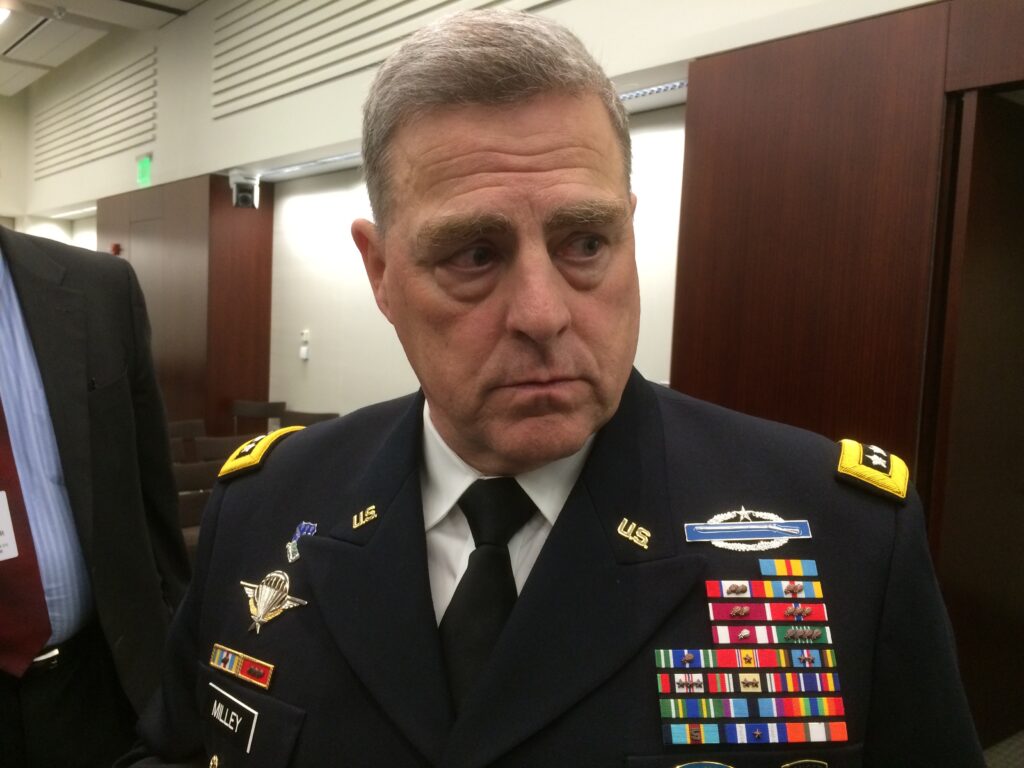
Gen. Mark Milley
From CFT Pilots to Futures Command
It’s early days, Maranian told me. “The CFTs right now are indeed pilots that were stood up at the end of the last AUSA (conference) in October,” he said, “and in the pilot phase we’ve been asked to look at a small number of projects and see where we can accelerate them, based on the authorities provided to us to operate between concept and materiel development decision.”
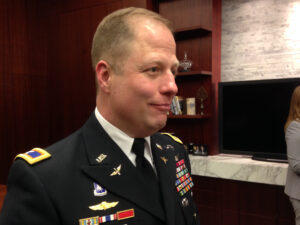
Walter Rugen
Will the Cross Functional Teams’ authorities grow when they’re brought under the new Army Futures Command? We don’t know yet.
“The pilot is different from when they stand up a more permanent structure,” emphasized the aviation team chief, Brig. Gen. Wally Rugen. But the design of that permanent structure is being led by Lt. Gen. Ed Cardon in considerable secrecy, even from the CFTs chiefs themselves. “They’ve firewalled us off from that,” Rugen told reporters before AUSA. “Gen. Cardon and team said, ‘don’t worry about Futures Command, we’ll let you know.'”
We do know two things:
- The Army has committed to making the CFT director position full-time. That has obvious advantages: no more divided attention or loyalties. But there are disadvantages as well: the CFT leaders will no longer have a foot in the traditional bureaucracy, the way Maranian does at Fort Sill, Lesperance does as Armor Commandant at Fort Benning, and so on.
- The Army’s acquisition apparatus — the Program Executive Officers and Project Mangers — will be “matrixed” under the new Army Futures Command, led by a four-star officer. But they will still report, by law, to the Senate-confirmed assistant secretary, a civilian. We still don’t know the details of how this dual-key arrangement will work on paper, let alone in practice.
The Army Chief of Staff, Gen. Mark Milley, and the service’s other top leaders are certainly trying to change the bureaucracy. The creation of Army Futures Command has been repeatedly described as the biggest change in the service’s institutions in over 40 years, since the service established the current trinity of top commands: Training & Doctrine Command (TRADOC), Forces Command (FORSCOM), and Army Materiel Command (AMC). After decades of cancelled Army programs, a major overhaul was probably necessary — but it will take tremendous effort to make it stick after the current leaders are gone.
“I commend the senior Army leadership for being on the same page, but the real test is the enduring nature of these priorities,” said Bruce Hock, a retired Army officer and former Senate staffer, at the AUSA conference. “Several times this week I heard ‘the chief’s priorities,’ ‘the chief’s priorities’, and they are the chief’s priorities, and we all be on the same page with the chief — but frankly they’re the Army’s priorities.”
Subscribe to our newsletter
Promotions, new products and sales. Directly to your inbox.
